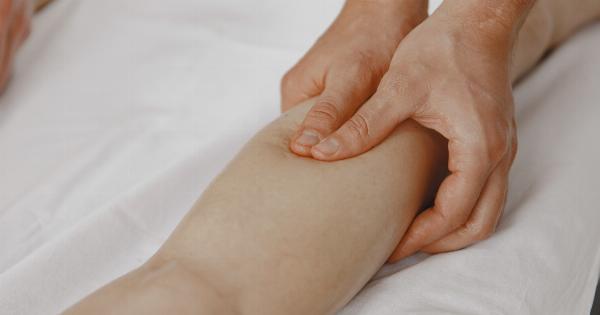Living with chronic pain can be incredibly challenging and can significantly impact your quality of life. While there are various treatment options available, yoga has emerged as a popular alternative therapy for managing chronic pain.
The practice of yoga combines physical postures, breathing exercises, and mindfulness techniques to help alleviate pain, improve flexibility, reduce stress, and enhance overall well-being. This ultimate guide will provide you with everything you need to know to start using yoga as an effective tool for chronic pain management.
Understanding Chronic Pain
Before diving into how yoga can help manage chronic pain, let’s first understand what chronic pain is. Chronic pain is a persistent and long-lasting pain that often lasts for at least three to six months, or even longer.
It can result from various conditions such as arthritis, fibromyalgia, back pain, migraines, and more. Unlike acute pain, chronic pain lingers and can have a significant impact on one’s physical, emotional, and mental well-being.
The Benefits of Yoga for Chronic Pain Management
Yoga offers numerous benefits for individuals struggling with chronic pain. Here are some of the ways yoga can help manage chronic pain:.
1. Enhances Flexibility and Range of Motion
Chronic pain often leads to stiffness and limited range of motion. Regular practice of yoga postures (asanas) helps stretch and strengthen muscles, increase flexibility, and improve joint mobility. This can alleviate pain and allow for better movement.
2. Strengthens Muscles and Supports the Body
Yoga involves various weight-bearing postures that help strengthen muscles and support the body. Strong muscles can provide better support to the affected areas, reducing strain and discomfort.
3. Promotes Mindfulness and Mental Well-being
Pain can be not only physical but also mentally taxing. Yoga incorporates mindfulness practices, such as breathing exercises and meditation, which can help reduce stress, improve focus, and promote mental well-being.
By enhancing your mind-body connection, you can better cope with chronic pain.
4. Boosts Circulation and Oxygenation
Yoga includes deep breathing exercises, which increase oxygen intake and improve blood circulation. Enhanced circulation helps vital nutrients to reach the affected areas, promoting healing and reducing pain.
5. Reduces Inflammation and Swelling
Chronic pain is often associated with inflammation and swelling. Certain yoga poses, such as twists and inversions, can stimulate the lymphatic system and reduce inflammation, providing relief from pain and discomfort.
Getting Started with Yoga for Chronic Pain Management
If you’re new to yoga or have never practiced it before, it’s important to start slowly and listen to your body. Here are some tips to help you get started:.
1. Consult with Your Healthcare Provider
Before beginning any new exercise or therapy, it’s essential to consult with your healthcare provider, especially if you have any underlying health conditions or injuries.
2. Find a Qualified Yoga Instructor
Look for a qualified and experienced yoga instructor who has knowledge and experience in working with individuals dealing with chronic pain. They can guide you through appropriate modifications and ensure you practice safely.
3. Start with Gentle Yoga Styles
Begin with gentle yoga styles such as Hatha, Yin, or Restorative yoga. These styles are less physically demanding and focus more on relaxation and gentle stretching.
4. Modify Poses According to Your Comfort
Don’t hesitate to modify poses to suit your comfort level. Use props like blocks, bolsters, or straps to support your body and make the poses more accessible. It’s important to honor your limitations and not push yourself into pain.
5. Listen to Your Body
Pay attention to how your body feels during and after each yoga session. If a particular pose or movement aggravates your pain, avoid it or modify it accordingly. Always listen to your body’s signals and adjust your practice accordingly.
Incorporating Yoga into Your Daily Routine
To reap the maximum benefits of yoga for chronic pain management, consistency is key. Here are some tips for incorporating yoga into your daily routine:.
1. Designate a Regular Practice Time
Choose a specific time each day when you can dedicate a few minutes to your yoga practice. Consistency will help you build the habit and make it easier to stick to your routine.
2. Start with Short Sessions
In the beginning, aim for shorter yoga sessions that you can comfortably perform. Gradually increase the duration as your body becomes more accustomed to the practice.
3. Practice Breathing Exercises Anytime
Breathing exercises can be practiced anytime, anywhere, and serve as valuable tools for pain management. Incorporate deep breathing techniques into your daily life whenever you feel stressed or in pain.
4. Combine Yoga with Other Strategies
Yoga can be supplemented with other pain management strategies such as medication, physical therapy, and mindfulness practices. Combining various approaches can help you find the most effective relief.
5. Be Patient and Kind to Yourself
Healing takes time, and progress may be gradual. Be patient and compassionate with yourself throughout the journey. Celebrate small milestones and give yourself permission to rest when needed.
Conclusion
Yoga has proven to be an effective complementary therapy for managing chronic pain. By incorporating yoga into your daily routine, you can experience improved flexibility, reduced stress, and overall better pain management.
Remember to consult your healthcare provider and find a qualified yoga instructor to ensure a safe practice. With consistency, patience, and self-care, yoga can become an essential tool in your journey towards chronic pain relief and enhanced well-being.




























